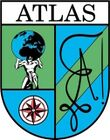Social and Economic Geography Field Trip Abroad
Uiterlijk
| Courses and exams | |
|---|---|
| Prof | Aalbers Manuel Loopmans Maarten Schuermans Nick van Heur Bas |
| Courses | Excursion |
| Examination | Partial or continuous assessment with (final) exam during the examination period |
| Background | |
| Credits | 3 |
| When? | 2nd semester |
| ECTS | KUL VUB |
Click here for the Dutch version. (Klik hier voor de Nederlandstalige versie.)
The field trip destination changes every year depending on the professor, typically with a rotation of 3-4 years. The last few years the destinations were Estonia (2025), Berlin (2024) and Marseille (2023).
Since 2025 an exam has been implemented on the social and economic field trip, to make the grading more similar to the physical field trip.
- Group paper before the field trip: 20%
- Fieldwork + group presentation on the field: 10%
- Fieldnotes of half an excursion day: 10%
- Written open-book exam: 60%
(Mark should be at least 8/20 for each part.)
2025 - Estonia
June
26/06/2025
- Imagine that the geography students from VUB and KU Leuven are going back to Tallinn next year to study the same case study neighbourhoods during a one week fieldtrip. What would your advice be for the students who pick your case study neighbourhood? Which research question(s) would you suggest for their research proposal? Which methodologies would you propose? What would your hypotheses be? Why did you choose this question? Draw on literature you have read for your paper, the research you have conducted in Tallinn and the discussions we have had in Estonia. Be as specific as possible.
- During our fieldtrip we visited: 1) the Old Town of Tallinn, 2) the Rotermann district of Tallinn, 3) the Lasnemae neighbourhood of Tallinn, and 4) the Kreenholm site in Narva. Explain how positionality of these four areas has (co-)determined their development trajectories from 1870 to 2025. Refer to territory, scale, place and network in your answer. You may refer to development that shape the trajectories of all mentioned areas, but you can also choose to discuss each area separately.
- During our fieldtrip, we visited Pohjala, Kopli Lines, Noblessner and the wooden houses in Kalamaja. Through an investigation of these sites, we can discuss similarities and differences between gentrification process in Belgium and Estonia. What do you consider to be five most important similarities or differences between gentrification processes in Belgium and Estonia? Discuss five similarities and/or differences in total, for instance two similarities and three differences. Elaborate.
25/06/2025
- Suppose you could stay in your researched district for two months for a master thesis: what questions would you research, what data would you collect, what hypothesis would you put forward and why would you conduct this research?
- Give five differences or similarities about the process of industrialisation and de-industrialisation between Belgium and Estonia.
- Four districts given: Riverfront promenade in Narva, Kreenholm factory, waterfront in Talinn and Vaike-Osmaë. Link these places with geographies of uneven development at city, country and continental scales. You may choose which scales to use with which place.
06/06/2025
- Suppose you're the mayor of the region you studied. Come up with three measures that could improve living conditions for the inhabitants of your district.
- Districts Merirahu and Tiskre are suburban neighbourhoods in Tallinn. Describe 5 differences from suburbanisation in Belgium.
- Place the districts, Vaike-Oismae, Viivikonna, Sillamae and Kalamaja on a timeline. Explain the difference in development between those neighbourhoods using the geological metaphor and positionality.
